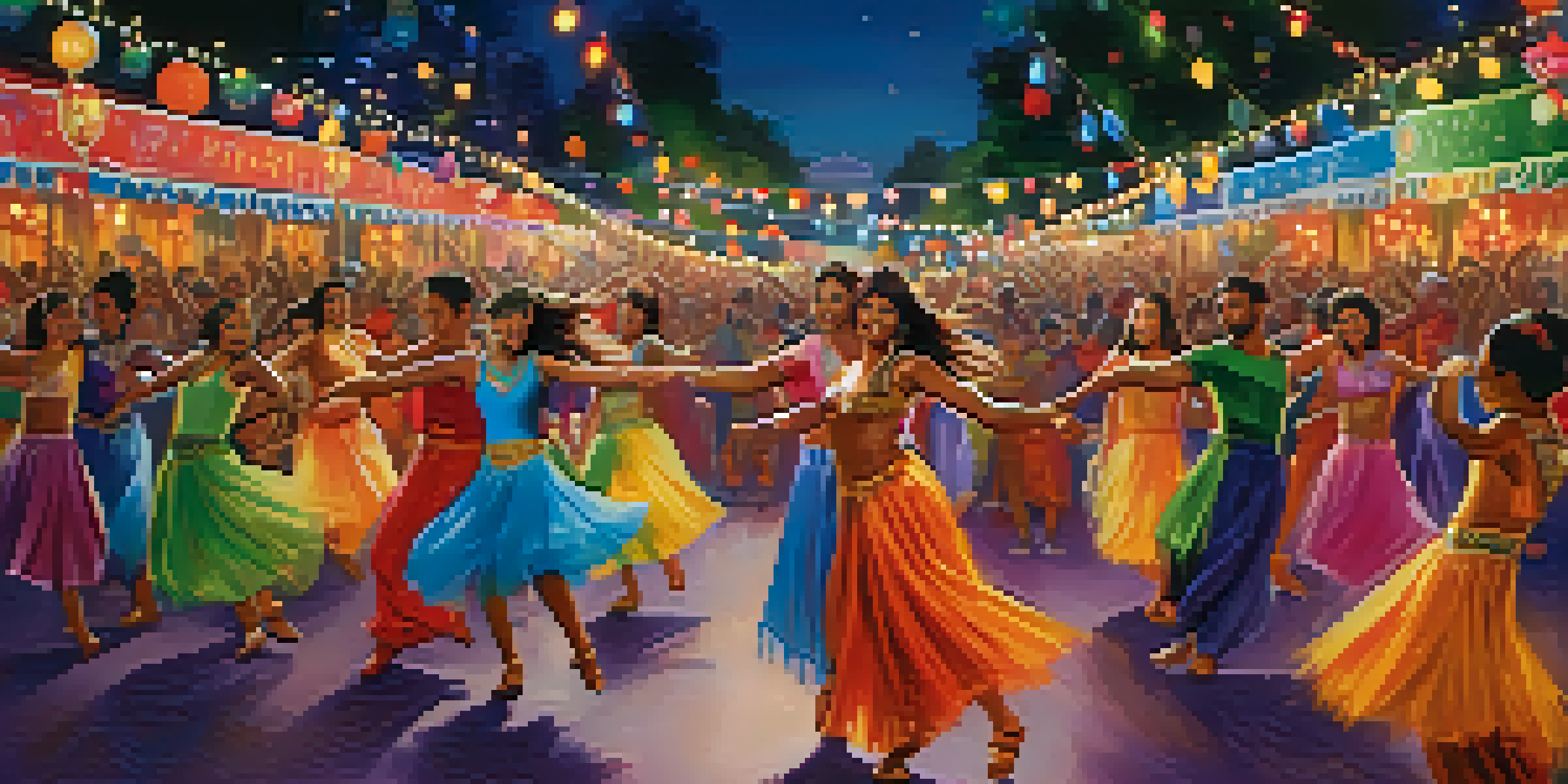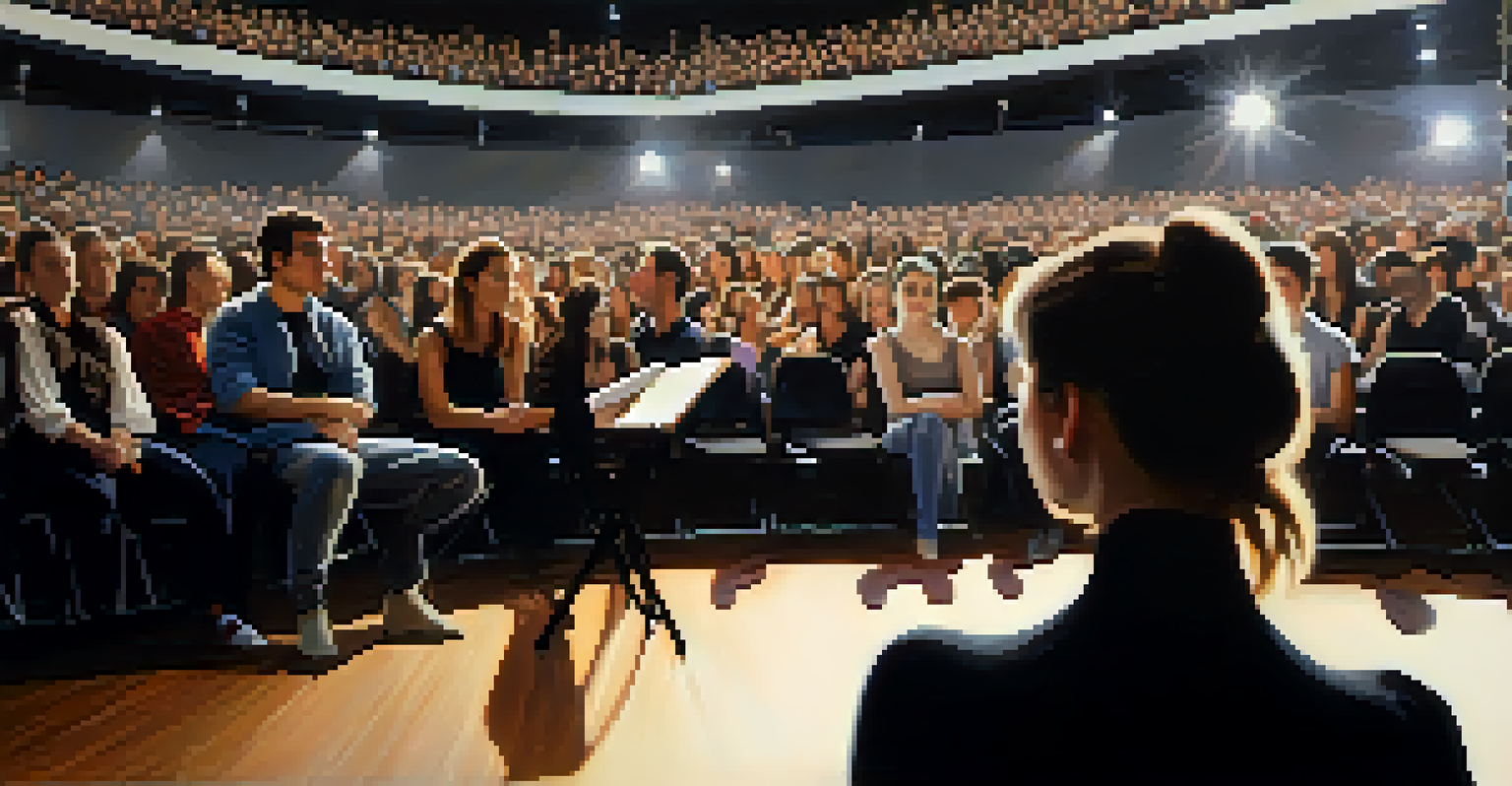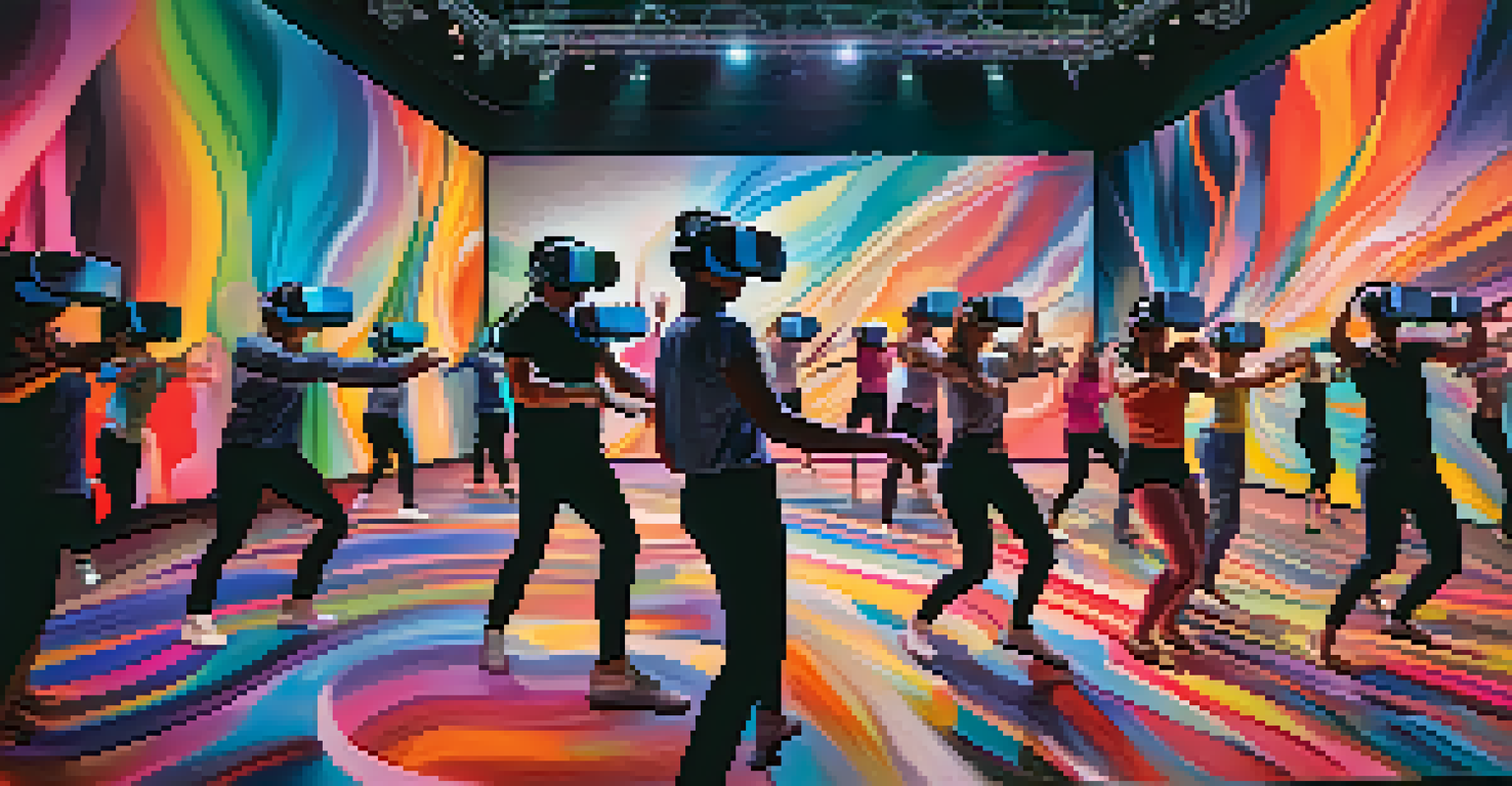Critics and Festivals: Shaping Dance Narratives

The Role of Critics in Dance Evolution
Critics play a vital role in shaping dance narratives by offering interpretations that resonate with audiences. Their insights can elevate a performance from mere entertainment to a profound cultural experience. For example, when a critic highlights the emotional depth of a contemporary piece, it can generate public interest and discussion, thereby influencing future performances.
Critics are the architects of the cultural conversation, shaping narratives that resonate beyond the stage.
Moreover, critics often act as gatekeepers, deciding which performances gain visibility and which fade into obscurity. Their reviews can make or break a dancer's career, creating a ripple effect in the industry. This power highlights the responsibility critics have in their assessments, as their words can shape public perception and artistic direction.
Through their critiques, these writers not only analyze but also contextualize dance within broader societal themes. They can draw connections between a performance and current social issues, making dance a vehicle for dialogue. This ability to connect dance narratives with real-world contexts enhances the art form's relevance and impact.
Festivals: Celebrating Dance and Diversity
Dance festivals serve as vibrant platforms that showcase a variety of styles and cultures in one place. They celebrate diversity, bringing together artists from different backgrounds and allowing them to share their unique narratives. For instance, events like the Jacob’s Pillow Dance Festival or the Edinburgh Festival Fringe are renowned for their eclectic lineups that challenge conventional dance storytelling.

These festivals not only provide exposure for dancers but also foster community engagement. Audiences are given the opportunity to witness a myriad of performances, often discovering new favorites or styles they never knew existed. This sense of community can ignite conversations around dance and its cultural significance, further enriching the overall experience.
Critics Shape Dance Narratives
Critics play a crucial role in interpreting and contextualizing dance performances, influencing public perception and artistic direction.
Additionally, festivals often incorporate workshops and discussions, allowing for deeper exploration of the art form. Participants can engage directly with choreographers and dancers, gaining insights that enhance their appreciation of the performances. This interactive element transforms passive viewers into active participants in the dance narrative.
The Intersection of Critics and Festivals
The relationship between critics and festivals is a symbiotic one, where each influences the other. Festivals rely on critics to help shape their image and attract audiences, while critics depend on festivals for fresh content and narratives to explore. This interconnectedness often leads to a richer understanding of dance as both an art form and a cultural commentary.
Dance is the hidden language of the soul, and critics help to translate its stories for the world.
For example, a well-reviewed performance at a festival can lead to increased ticket sales for subsequent shows, benefiting both the artists and the festival. Conversely, critics often attend festivals to discover emerging talents and trends, which can lead to exciting new narratives in their writings. This dynamic encourages a continuous cycle of growth and innovation in the dance community.
Moreover, critics often highlight the significance of festivals in their reviews, drawing attention to the cultural importance of these events. By discussing the variety and quality of performances, they elevate the festival’s status and encourage broader attendance. This mutual reinforcement helps to cultivate a vibrant dance ecosystem that thrives on collaboration and shared experiences.
Cultural Narratives in Dance Performances
Dance is a powerful medium for storytelling, with cultural narratives deeply embedded in its movements and expressions. Diverse dance styles reflect the histories and traditions of the communities they originate from, allowing audiences to connect with different cultures. For instance, traditional Indian dance forms often convey mythological stories, while contemporary ballet might explore themes of identity and belonging.
Critics and festivals play essential roles in bringing these narratives to light. When a critic emphasizes the cultural significance of a performance, it can prompt deeper audience engagement and appreciation. Festivals, by showcasing various cultural dance forms, expose audiences to narratives they might otherwise overlook, enriching their understanding of the world.
Festivals Celebrate Cultural Diversity
Dance festivals provide vibrant platforms that showcase diverse styles and foster community engagement through shared experiences.
Through the lens of dance, audiences can experience the nuances of different cultures, fostering empathy and understanding. This cultural exchange is vital in today's globalized world, where dance can serve as a bridge across divides. As critics and festivals continue to promote these narratives, they help ensure that diverse voices are heard and celebrated.
The Impact of Digital Criticism on Dance
In the digital age, criticism has evolved beyond traditional platforms, expanding into blogs, social media, and video content. This shift has democratized the field, allowing more voices to contribute to the conversation surrounding dance. As a result, audiences now have access to a broader range of perspectives, which can enrich their understanding of performances.
For instance, social media platforms allow for immediate reactions and discussions around performances, creating a dynamic dialogue between artists and audiences. Critics can share their thoughts in real-time, influencing public opinion and shaping the narrative instantly. This immediacy can also lead to a heightened sense of community among fans and dancers alike.
However, this digital criticism comes with its own challenges, including the need for discernment among audiences. With so many opinions available, distinguishing between informed critiques and casual commentary can be difficult. Encouraging thoughtful engagement with both digital and traditional criticism can help audiences navigate this landscape more effectively.
The Future of Dance Narratives
Looking ahead, the future of dance narratives seems more diverse and inclusive than ever. As critics and festivals continue to embrace new voices and innovative styles, we can expect to see a wider range of stories being told. This evolution reflects a larger societal shift towards celebrating diversity and representation in the arts.
Emerging technologies, such as virtual reality and augmented reality, are also set to transform how dance narratives are experienced. Festivals may soon offer immersive experiences that allow audiences to step inside a performance, blurring the lines between spectator and participant. This innovative approach could redefine our understanding of dance and its narratives.
Digital Criticism Expands Perspectives
The rise of digital criticism democratizes the conversation around dance, offering a wider range of viewpoints while requiring discernment from audiences.
Ultimately, as critics and festivals adapt to these changes, they will continue to play pivotal roles in shaping the future of dance. By fostering creativity and encouraging dialogue, they will help ensure that dance remains a dynamic and relevant form of storytelling in society.
Conclusion: The Collaborative Dance Ecosystem
In conclusion, the relationship between critics and festivals is instrumental in shaping dance narratives. Together, they create an ecosystem that nurtures creativity, diversity, and cultural exchange. As both continue to evolve, they will play crucial roles in bringing new stories to light and enriching the dance landscape.
By celebrating both established and emerging artists, they foster an environment where innovation thrives. This collaboration not only enhances the art form but also encourages audiences to engage more deeply with dance narratives. It reminds us that dance is not just a performance but a powerful medium for storytelling and connection.

As we look to the future, it's clear that the synergy between critics and festivals will remain essential. Their joint efforts will continue to shape the way we experience and understand dance, ensuring that it remains a vibrant and vital part of our cultural narrative.